Namo Buddhay!
Before the rise of Islam, Buddhism and Buddhist rule spread from India to Arabia due to the policies of Emperor Ashoka's Buddhism. The pagans of Arbasthan were not only pagan Hindus but there were also a substantial number of Buddhists. In the Kaaba of Arabia, according to the Islamic Encyclopedia, there were more than 360 idols of Hindu gods and goddesses, and the uncle and family of the Prophet Muhammad, the founder of Islam, were the patrons and mahants of that huge temple.
What happened after Maurya and Shunga dynasty
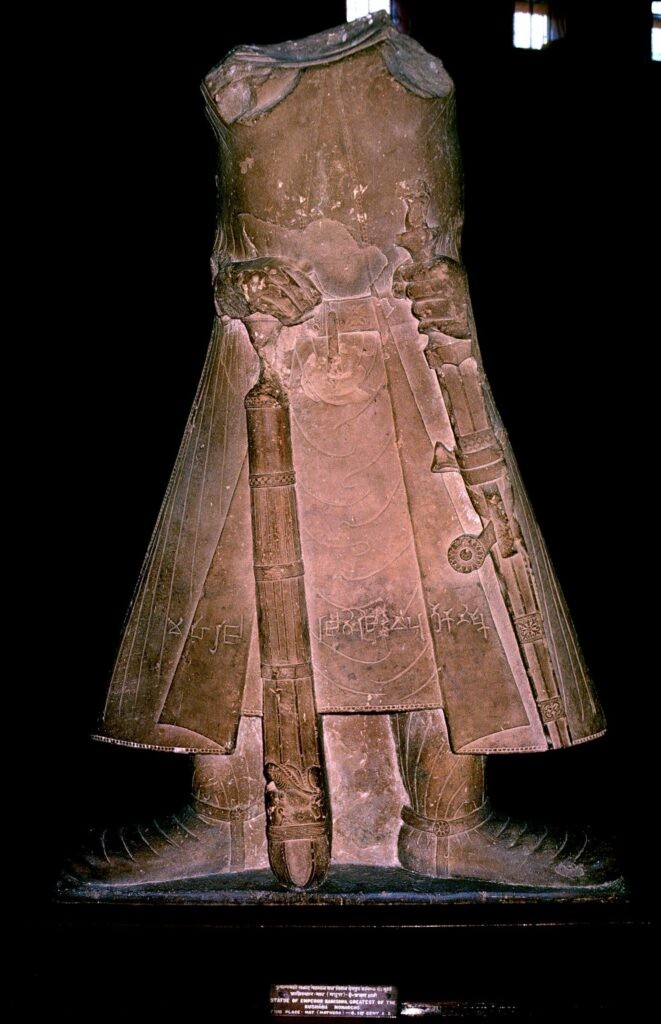
Due to the weakening of the Magadha Empire after the Maurya and Sunga dynasty, the Hindu satraps Shakas, Kushanas and Pahlavas, who were ruling outside the border of India, proceeded to take control of more and more parts of the dilapidated Magadha Empire. The Kushans, who came out of Turkistan, went ahead and succeeded in entering India. Due to the predominance of Buddhism in the border areas, Kanishka, the most prolific ruler of the Kushan Hindus, adopted Buddhism. At the time of Kushanas, there was Buddhist rule from Turkistan to present day Afghanistan, Samarkand, Swat, Bajur, Kafiristan etc. When Buddhist rule started in Iraq and other Arab states is still a matter of research.
What happened to Buddhists in Arabia, Iraq after the rise of Islam
When Islam emerged in Arbasthan (Arab), then Jews, Christians, Buddhists, Hindus etc. were made Muslims on the basis of sword. The wise men of Turgasthan (Turkey) soon collapsed and became Muslims, but the Hindus turned out to be a little brave. Therefore jihad against the Turks started in 651 AD, so it took a whole hundred years to convert them all to Islam. The name of the last prince of Iraq was Burmak. Edward de Sachau, the translator of the history of Alberuni, has written that the city of Navbahar in Iraq is an apocalypse of Navbihar. It was a Buddhist Peeth. Historian PN Oak writes, “The post of this Peethadheesh was called Paramak (Param Guru). When the Arab-Islamic invaders attacked Iraq and made Iraq Muslim by force, then the religion of Paramak alias Barmak ended. Due to Paramak alias Burmak becoming the Islamic king, his followers became Muslims by his orders”.
After Islamization of the Persians of Iran by the Arabs, the Turks defeated and captured the Buddhist king of Markandeya city (Samarkand). According to the Greek historian Orion, Markand was the capital of Sagadiana. Markand is probably the same city that the Iranian people today call Samarkand - Sir W Drummond's book page 322
Markande is actually Markandeya i.e. the old name of Samarkand city was Markandeya Nagar because there was ashram and Gurukul of Rishi Markandeya. Sagadiana Rajkul is an ancient word of purification. Samarkand was a Buddhist city before the Muslims took over Samarkand and the king here was also a Buddhist. The palace of the last Buddhist king is now called the tomb of Timur Lang - PN Oak was now India's turn. Historian PN Oak writes, "The people of the great Vedic Aryan culture (Hindu, Buddhist) of Eurasia were getting absorbed in the culture of "Violence loot paramodharma:" while chanting the silly garland of "Ahimsa Paramodharma."
The betrayal of the Buddhists by the majestic King Dahir Sen
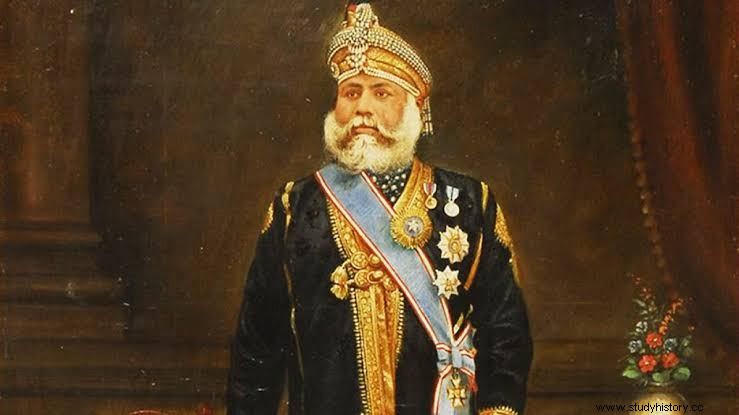
To attack India, Hajjaj, the governor of the Caliph, sent a ruthless devil like him, Mohammed bin Qasim, with brutal fighters. Qasim attacked King Dahir Sen of Sindh with all his might, but Dahir's soldiers reminded him of Chhathi's milk. Unfortunately, the political scholars of Nironkot and Sivastan, betraying Raja Dahir Sen out of jealousy, helped Shaitan Qasim immensely (historian Hemchandra Roy Chowdhury has supported this view). His 1 With the help, Qasim deceitfully sent some of his soldiers to Dahir's army in a group of local women disguised as women during the night. Due to the crying voices, King Dahir came to his aid and Kasim took advantage of the darkness and attacked Dahir alone. Dahir attained Veergati while fighting among thousands of killers. Qasim captured Alor, the capital of Sindh.
Hajjaj sent a message to Qasim, "Don't give any chance to the infidels. Immediately behead them…this is the order of Allah.”
What happened to the Buddhists after Qasim's conquest of Sindh
The terrorists of the invader Muhammad bin Qasim, after the conquest of Sindh, caused fierce bloodshed on Hindus and Buddhists in villages, cities, thousands of women's chests were scraped, due to this, to save their shame, thousands of adolescent girls to protect their modesty in wells, ponds Died drowned. By dragging women out of their homes, their bodies were looted. Even the political intellectuals who supported Mohammad bin Qasim by betraying the king of Sindh and the people of Sindh were not spared. He too had to choose between death or becoming a Muslim. According to Date Hind and Chachnama, Muslim invaders from Arabia gang-raped 700 Buddhist monks in Deval near Karachi. Peace-loving and non-violent Buddhist women became the machine for producing violent and bloodthirsty jihadists. By the time Qasim took complete control of Sindh, Sindh was almost completely Buddhist free.
The heroes of India put an end to Islamic rule
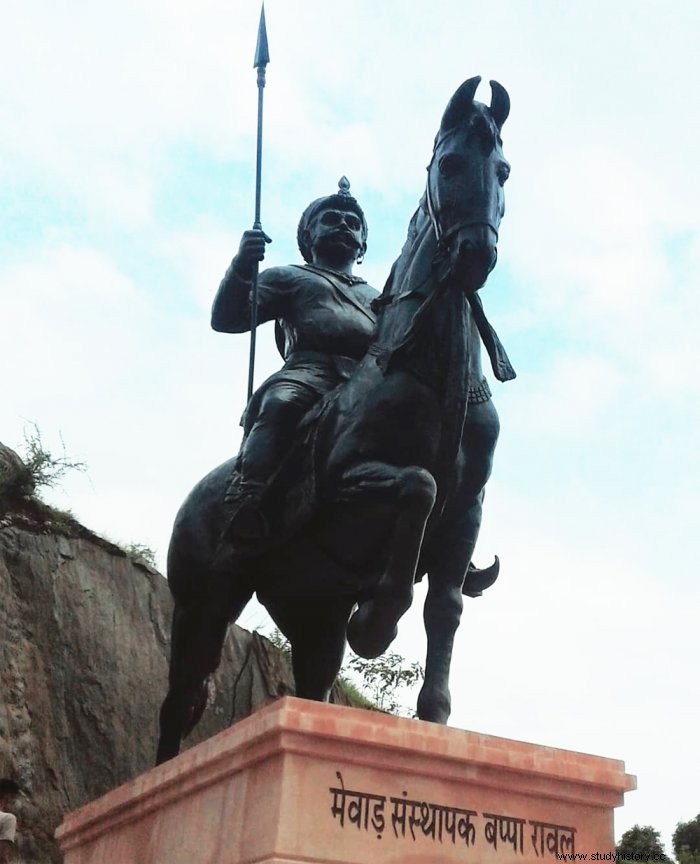
Just as Alexander the Great's dream of world conquest had bowed before India, in the same way the victory chariot of Islam had also bowed before the heroes of India. The Arab invaders who had occupied Sindh, Multan and parts of present-day Afghanistan for some time, were also captured by Raja Bappa Rawal of Raghuvanshi Sisodia dynasty and the heroes of Gurjara Pratihar dynasty after driving away the Arabs. . Lalitaditya Muktpid of Karkotak dynasty in Kashmir could not raise the eyes of the Arabs towards Kashmir for centuries. He killed the Arabs by driving them to Arabia. Entire India once again turned saffron but one problem remained.
The beginning of a serious problem
That problem was the Muslims of Sindh and Multan forcibly made Muslims through violence, massacres and rapes by Arab invaders. He was also breathing a sigh of relief after being freed from Islamic terror, he also hated Islam because he was forcibly converted to Islam. They wanted to join the Sanatan Dharma of their ancestors back, but some contractors of the religion stood as a wall between Sanatan Dharma and them. The foolishness of some Hindus blocked the way for their return. Historian PN Oak writes, "They were victims of foreign Muslim barbarism. He needed sympathy and support but he was scolded. He was forced to take the side of the enemies of India. This was the time when Christians and Muslims were forcibly converting non-religious people into their religion by the force of the sword, but here their own brothers, who had become Muslims for some time due to the fear of forced death and rape of sisters and daughters, and now themselves Wanted to return to Hinduism but the foolish Hindus were not ready to include him in theirs.
This was the second most dreadful and deadly foolishness of the Hindus after the foolishness of Ahimsa Paramodharma. The result was that the descendants of those Muslims were desperate to find their history in the same barbaric invader Muslims, due to which the anti-India power started growing within India, which Hindus could not even eliminate due to Sanatan Sanskar. This is the reason that when the Turks attacked Sindh after two and a half hundred years, the Muslims of Sindh welcomed the invaders and the Turks had a permanent right over Sindh. Hindus repeated the same mistake in Kashmir also.
Muslim invaders and Buddhist rulers of India
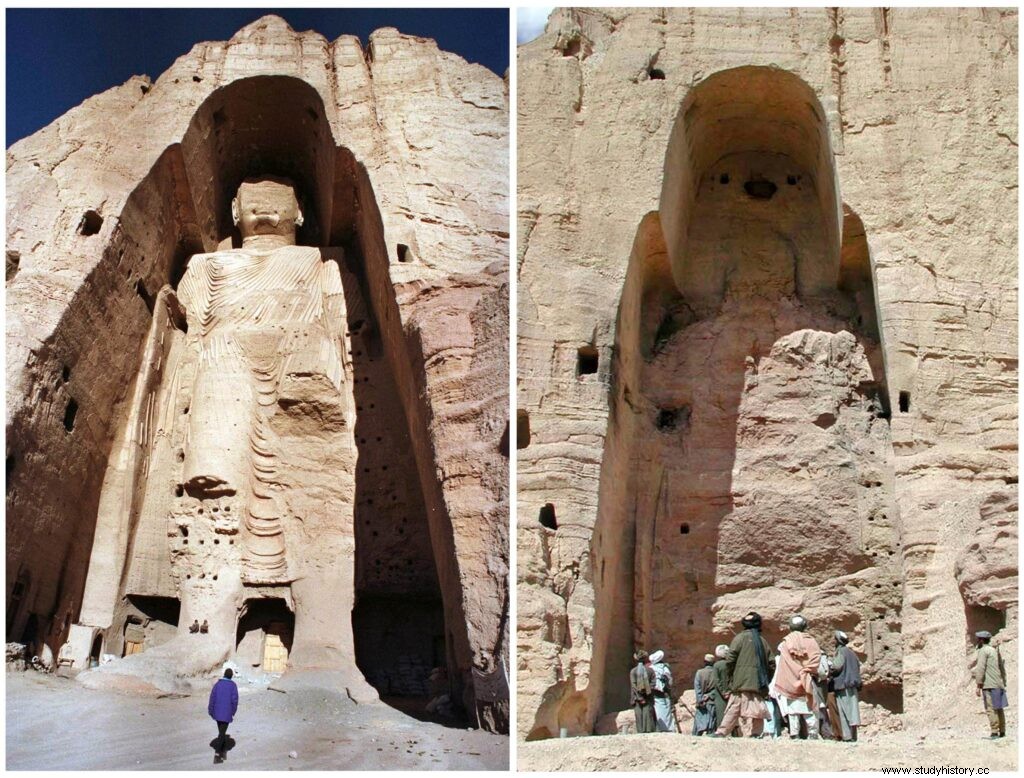
Further, Alaptagin became a Muslim ruler in Khorasan of India. He made a Turkish general named Subuktagin. Muslims started attacking Afghanistan and parts of India continuously to make India an Islamic state. The Muslim invaders were able to easily defeat the Buddhists of Bamiyan. After killing Buddhists in Bamiyan and seizing power, Muslims attacked the Turkish Buddhists of Kabul. The Buddhist king of the Turkish dynasty, Laghman Turk, surrendered and accepted to become a Muslim. With that all the Buddhist subjects became Muslims and the Hindus who survived fled towards Gandhara. The Kallars (Brahmins) of the Hindushahi dynasty of Gandhara (or Udbhand), with the support of the remaining Hindus of Kabul, immediately attacked the Buddhist-Muslim Turkishahi dynasty and took control of Kabul. The Hindushahi dynasty of Gandhara fought hard with the Muslims and got rid of their sixes. It is said that a brave warrior Jasraj killed Muhammad Ghazni's father Subuktagin in his own court and hanged his head in Multan.
Jaipal of the Hindushahi dynasty, who now ruled from the Lahore fort, went up to Ghazni and defeated the Muslims. But after the defeat of Mohammad Ghaznavi in the battle of Pushkalavati (Peshawar) in 1001 AD, after being hurt by the heinous misdeeds of genocide and rape by the Muslims, he committed suicide by entering the fire, accusing himself of atrocities on the subjects. After the death of Jaipal, the present Afghanistan of India, which was ruled by Buddhists and Hindus, was almost completely Islamized. Afghanistan is that part of India where historical evidence of human settlement (Vedic Aryan culture) has been found 50,000 years ago (Wikipedia).
What happened to the Buddhist kingdoms that did not help Raja Anangpal of Lahore
After Raja Jaipal, son Anangpal fought a terrible struggle with Ghazni. To help Anangpal, the distant states of India had sent military aid, but the neighboring Buddhist states of Swat, Bajur and Kafiristan did not help. After the defeat of Anangpal, it became easy for Ghaznavi to attack those states. He attacked those three Buddhist kingdoms and occupied them without any major struggle. The Buddhist kings there were either killed or became Muslims along with the Buddhist subjects. Peace-loving, non-violent Buddhist women were forced to create violent, bloodthirsty jihadis.
What happened to the Buddhists under Islamic rule
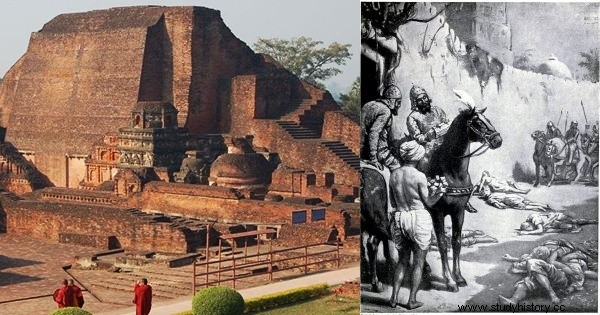
When the Muslims invaded and occupied parts of present-day India, at that time Bihar, Bengal was ruled by the Pala dynasty, which was a supporter and patron of Buddhism. Buddhists were non-violent, so it was very easy for the invading Muslims to eliminate them. He had experienced this weakness of Buddhists only in countries like Arabia, Iraq, Turkey, Samarkand, Afghanistan etc. In the entire history, there has not been a single Buddhist king who has fought hard to save his kingdom, people and Buddhism from Islamic invaders. Therefore, in the thirteenth century, they had captured almost the whole of Bihar and Bengal. Along with eliminating the Buddhists, he also destroyed many universities, schools, Buddhist, Jain, Hindu temples, monasteries like Nalanda, Bikramshila. The situation had become such that under Islamic rule, the country of Lord Buddha and Buddhists had almost ended Buddhism and Buddhism from India itself.
1. Some other historians are of the opinion that the male demon Kasim took many village chiefs and their female children hostage. They threatened to rape and sell the women and kill the children, so that the village headman and the men and women agreed to obey Kasim. Then all the men of the village were taken hostage and sent their women with their soldiers to King Dahir shouting Save Save. After the death of King Dahir, everyone was forcibly converted to Islam and some of these chieftains also fought against the sons of Raja Dahir.
